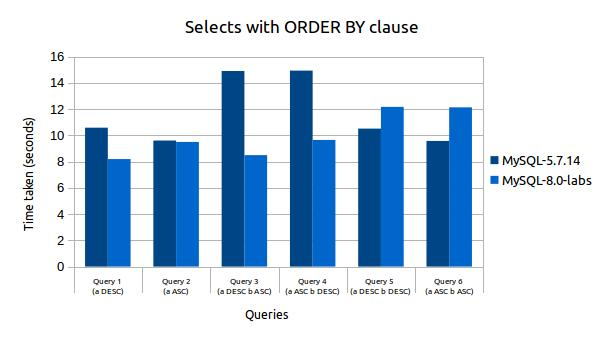目录
- 1.简介和安装
- 2.sysbench使用方法
- 3.准备测试数据
- 4.数据库测试和结果分析
- 5.cpu/io/内存等测试
1.简介和安装
sysbench是一个开源的、模块化的、跨平台的多线程性能测试工具,可以用来进行CPU、内存、磁盘I/O、线程、数据库的性能测试。目前支持的数据库有MySQL、Oracle和PostgreSQL。
- 官方站点:https://github.com/akopytov/sysbench/
- rpm包下载:https://packagecloud.io/akopytov/sysbench/packages/el/7/sysbench-1.0.15-1.el7.centos.x86_64.rpm
- 源码包下载:https://github.com/akopytov/sysbench/archive/1.0.15.tar.gz
- 本地下载:http://xiazai.jb51.net/201807/yuanma/sysbench_jb51.rar
如果是编译安装,需要先安装好mysql的开发包(尽管编译错误时提示的是缺少Mysql库文件)。
yum -y install mysql-community-devel tar xf 1.0.15.tar.gz cd sysbench-1.0.15 ./autogen.sh ./configure make -j make install
安装后,只有一个二进制文件sysbench,还提供了很多个lua脚本。
[root@s1 ~]# rpm -ql sysbench | grep 'bin\|lua' /usr/bin/sysbench /usr/share/sysbench/bulk_insert.lua /usr/share/sysbench/oltp_common.lua /usr/share/sysbench/oltp_delete.lua /usr/share/sysbench/oltp_insert.lua /usr/share/sysbench/oltp_point_select.lua /usr/share/sysbench/oltp_read_only.lua /usr/share/sysbench/oltp_read_write.lua /usr/share/sysbench/oltp_update_index.lua /usr/share/sysbench/oltp_update_non_index.lua /usr/share/sysbench/oltp_write_only.lua /usr/share/sysbench/select_random_points.lua /usr/share/sysbench/select_random_ranges.lua /usr/share/sysbench/tests/include/inspect.lua /usr/share/sysbench/tests/include/oltp_legacy/bulk_insert.lua /usr/share/sysbench/tests/include/oltp_legacy/common.lua /usr/share/sysbench/tests/include/oltp_legacy/delete.lua /usr/share/sysbench/tests/include/oltp_legacy/insert.lua /usr/share/sysbench/tests/include/oltp_legacy/oltp.lua /usr/share/sysbench/tests/include/oltp_legacy/oltp_simple.lua /usr/share/sysbench/tests/include/oltp_legacy/parallel_prepare.lua /usr/share/sysbench/tests/include/oltp_legacy/select.lua /usr/share/sysbench/tests/include/oltp_legacy/select_random_points.lua /usr/share/sysbench/tests/include/oltp_legacy/select_random_ranges.lua /usr/share/sysbench/tests/include/oltp_legacy/update_index.lua /usr/share/sysbench/tests/include/oltp_legacy/update_non_index.lua
本文介绍的是新版本sysbench oltp lua脚本的用法(/usr/share/sysbench/*.lua),所以不涉及传统的lua(tests/include/oltp_legacy/*.lua),如果想要了解这些传统Lua脚本的用法,网上随便找。
2.sysbench使用方法
以下列出了sysbench对测试mysql时常用的选项。
[root@xuexi ~]# sysbench --help Usage: sysbench [options]... [test_lua] [lua_options] [command] Commands implemented by most tests: prepare run cleanup help
通用选项:以下中括号中的值表示默认值
–threads=N 指定线程数[1]
–events=N 限制最大请求数,0表示不限制[0]
–time=N 限制最长执行时间,0表示不限制[10]
–events和–time二者选一即可
–forced-shutdown=STRING 达到最长执行时间后还需等待多久关闭sysbench
off表示禁用该功能[off]
–thread-stack-size=SIZE 每个线程使用的栈空间大小[64K]
–rate=N 平均事务处理速率,0表示不限制[0]
–report-interval=N 每隔几秒报告一次结果,0表示禁用间隔报告[0]
–config-file=FILENAME 从文件中读取命令行选项
–tx-rate=N 已废弃,是–rate的别名[0]
–max-requests=N 已废弃,是–events的别名[0]
–max-time=N 已废弃,是–time的别名[0]
–num-threads=N 已废弃,是–threads的别名[1]
mysql相关选项:
–mysql-host=[LIST,…] MySQL server host [localhost]
–mysql-port=[LIST,…] MySQL server port [3306]
–mysql-socket=[LIST,…] MySQL socket
–mysql-user=STRING MySQL user [sbtest]
–mysql-password=STRING MySQL password []
–mysql-db=STRING MySQL database name [sbtest]
–mysql-ignore-errors=[LIST,…] 要忽略的错误代码,值可为”all” [1213,1020,1205]
Compiled-in tests:
fileio – File I/O test
cpu – CPU performance test
memory – Memory functions speed test
threads – Threads subsystem performance test
mutex – Mutex performance test
其中,command部分有4类:prepare run cleanup和help:
- prepare:准备数据的命令。例如,在sysbench压力测试之前,需要先准备好测试库、测试表以及测试表中的数据。具体用法见后文。
- run:表示进行压力测试。
- cleanup:清除测试时产生的数据。
- help:输出给定lua脚本的帮助信息。
test_lua是想要使用的lua脚本,如果是rpm包安装的sysbench,则这些脚本都是/usr/share/sysbench目录下。对于一般的数据库测试,只需使用和oltp有关的lua脚本就足够。
options和lua_options是不同的,options是sysbench的选项,lua_options是lua脚本的选项,lua_options应该要放在test_lua的后面(非必需,但建议)。
例如,要查看oltp_common.lua的用法,可以:
sysbench /usr/share/sysbench/oltp_common.lua help
3.准备测试数据
首先创建sysbench所需数据库sbtest(这是sysbench默认使用的库名,必须创建测试库)。
mysqladmin -h127.0.0.1 -uroot -pP@ssword1! -P3306 create sbtest;
然后,准备测试所用的表,这些测试表放在测试库sbtest中。这里使用的lua脚本为/usr/share/sysbench/oltp_common.lua。
sysbench --mysql-host=127.0.0.1 \ --mysql-port=3306 \ --mysql-user=root \ --mysql-password=P@ssword1! \ /usr/share/sysbench/oltp_common.lua \ --tables=10 \ --table_size=100000 \ prepare
其中–tables=10表示创建10个测试表,–table_size=100000表示每个表中插入10W行数据,prepare表示这是准备数的过程。
mysql> show tables from sbtest; +------------------+ | Tables_in_sbtest | +------------------+ | sbtest1 | | sbtest10 | | sbtest2 | | sbtest3 | | sbtest4 | | sbtest5 | | sbtest6 | | sbtest7 | | sbtest8 | | sbtest9 | +------------------+ mysql> select count(*) from sbtest.sbtest1; +----------+ | count(*) | +----------+ | 100000 | +----------+
如果想要清除这10个表,可使用cleanup命令。
sysbench --mysql-host=127.0.0.1 \ --mysql-port=3306 \ --mysql-user=root \ --mysql-password=P@ssword1! \ /usr/share/sysbench/oltp_common.lua \ --tables=10 \ cleanup
4.数据库测试和结果分析
稍微修改下之前准备数据的语句,就可以拿来测试了。
需要注意的是,之前使用的lua脚本为oltp_common.lua,它是一个通用脚本,是被其它lua脚本调用的,它不能直接拿来测试。
所以,我这里用oltp_read_write.lua脚本来做读、写测试。还有很多其它类型的测试,比如只读测试、只写测试、删除测试、大批量插入测试等等。可找到对应的lua脚本进行调用即可。
sysbench --threads=4 \ --time=20 \ --report-interval=5 \ --mysql-host=127.0.0.1 \ --mysql-port=3306 \ --mysql-user=root \ --mysql-password=P@ssword1! \ /usr/share/sysbench/oltp_read_write.lua \ --tables=10 \ --table_size=100000 \ run
以下是测试返回的结果:
Initializing worker threads…
Threads started!
####以下是每5秒返回一次的结果,统计的指标包括:
#### 线程数、tps(每秒事务数)、qps(每秒查询数)、
#### 每秒的读/写/其它次数、延迟、每秒错误数、每秒重连次数
[ 5s ] thds: 4 tps: 130.16 qps: 2606.30 (r/w/o: 1824.51/520.66/261.13) lat (ms,95%): 104.84 err/s: 0.00 reconn/s: 0.00
[ 10s ] thds: 4 tps: 126.74 qps: 2539.17 (r/w/o: 1778.17/507.52/253.47) lat (ms,95%): 108.68 err/s: 0.00 reconn/s: 0.00
[ 15s ] thds: 4 tps: 136.54 qps: 2736.34 (r/w/o: 1915.25/548.01/273.07) lat (ms,95%): 102.97 err/s: 0.00 reconn/s: 0.00
[ 20s ] thds: 4 tps: 107.44 qps: 2148.65 (r/w/o: 1505.60/428.17/214.89) lat (ms,95%): 132.49 err/s: 0.00 reconn/s: 0.00SQL statistics:
queries performed:
read: 35098 # 执行的读操作数量
write: 10028 # 执行的写操作数量
other: 5014 # 执行的其它操作数量
total: 50140
transactions: 2507 (124.29 per sec.) # 执行事务的平均速率
queries: 50140 (2485.82 per sec.) # 平均每秒能执行多少次查询
ignored errors: 0 (0.00 per sec.)
reconnects: 0 (0.00 per sec.)General statistics:
total time: 20.1694s # 总消耗时间
total number of events: 2507 # 总请求数量(读、写、其它)Latency (ms):
min: 2.32
avg: 32.13
max: 575.78
95th percentile: 118.92 # 采样计算的平均延迟
sum: 80554.96Threads fairness:
events (avg/stddev): 626.7500/2.49
execution time (avg/stddev): 20.1387/0.04
5.cpu/io/内存等测试
sysbench内置了几个测试指标。
Compiled-in tests:
fileio – File I/O test
cpu – CPU performance test
memory – Memory functions speed test
threads – Threads subsystem performance test
mutex – Mutex performance test
可直接help输出测试方法。例如,fileio测试。
[root@xuexi ~]# sysbench fileio help
sysbench 1.0.15 (using bundled LuaJIT 2.1.0-beta2)
fileio options:
--file-num=N number of files to create [128]
--file-block-size=N block size to use in all IO operations [16384]
--file-total-size=SIZE total size of files to create [2G]
--file-test-mode=STRING test mode {seqwr, seqrewr, seqrd, rndrd, rndwr, rndrw}
--file-io-mode=STRING file operations mode {sync,async,mmap} [sync]
--file-async-backlog=N number of asynchronous operatons to queue per thread [128]
--file-extra-flags=[LIST,...] list of additional flags to use to open files {sync,dsync,direct} []
--file-fsync-freq=N do fsync() after this number of requests (0 - don't use fsync()) [100]
--file-fsync-all[=on|off] do fsync() after each write operation [off]
--file-fsync-end[=on|off] do fsync() at the end of test [on]
--file-fsync-mode=STRING which method to use for synchronization {fsync, fdatasync} [fsync]
--file-merged-requests=N merge at most this number of IO requests if possible (0 - don't merge) [0]
--file-rw-ratio=N reads/writes ratio for combined test [1.5]
例如,创建5个文件,总共1G,每个文件大概200M。
sysbench fileio --file-num=5 --file-total-size=1G prepare [root@xuexi ~]# ls -lh test* -rw------- 1 root root 205M Jul 8 12:15 test_file.0 -rw------- 1 root root 205M Jul 8 12:15 test_file.1 -rw------- 1 root root 205M Jul 8 12:15 test_file.2 -rw------- 1 root root 205M Jul 8 12:15 test_file.3 -rw------- 1 root root 205M Jul 8 12:15 test_file.4
然后,运行测试。
sysbench --events=5000 \ --threads=16 \ fileio \ --file-num=5 \ --file-total-size=G \ --file-test-mode=rndrw \ --file-fsync-freq=0 \ --file-block-size=16384 \ run
结果:
File operations:
reads/s: 98.67
writes/s: 66.85
fsyncs/s: 6.26Throughput: # 吞吐量
read, MiB/s: 1.54 # 表示读的带宽
written, MiB/s: 1.04 # 表示读的带宽General statistics:
total time: 12.7426s
total number of events: 2117Latency (ms):
min: 0.00
avg: 86.66
max: 2919.41
95th percentile: 646.19
sum: 183460.80Threads fairness:
events (avg/stddev): 132.3125/24.19
execution time (avg/stddev): 11.4663/1.09
再比例cpu性能测试:
[root@xuexi ~]# sysbench cpu --threads=40 --events=10000 --cpu-max-prime=20000 run sysbench 1.0.15 (using bundled LuaJIT 2.1.0-beta2) Running the test with following options: Number of threads: 40 Initializing random number generator from current time Prime numbers limit: 20000 Initializing worker threads... Threads started! CPU speed: events per second: 2127.81 General statistics: total time: 4.986s total number of events: 10000 Latency (ms): min: 1.72 avg: 18.16 max: 302.17 5th percentile: 110.66 sum: 181628.49 Threads fairness: events (avg/stddev): 250.0000/30.81 execution time (avg/stddev): 4.5407/0.10
总结
以上就是这篇文章的全部内容了,希望本文的内容对大家的学习或者工作具有一定的参考学习价值,如果有疑问大家可以留言交流,谢谢大家对NICE源码的支持。








